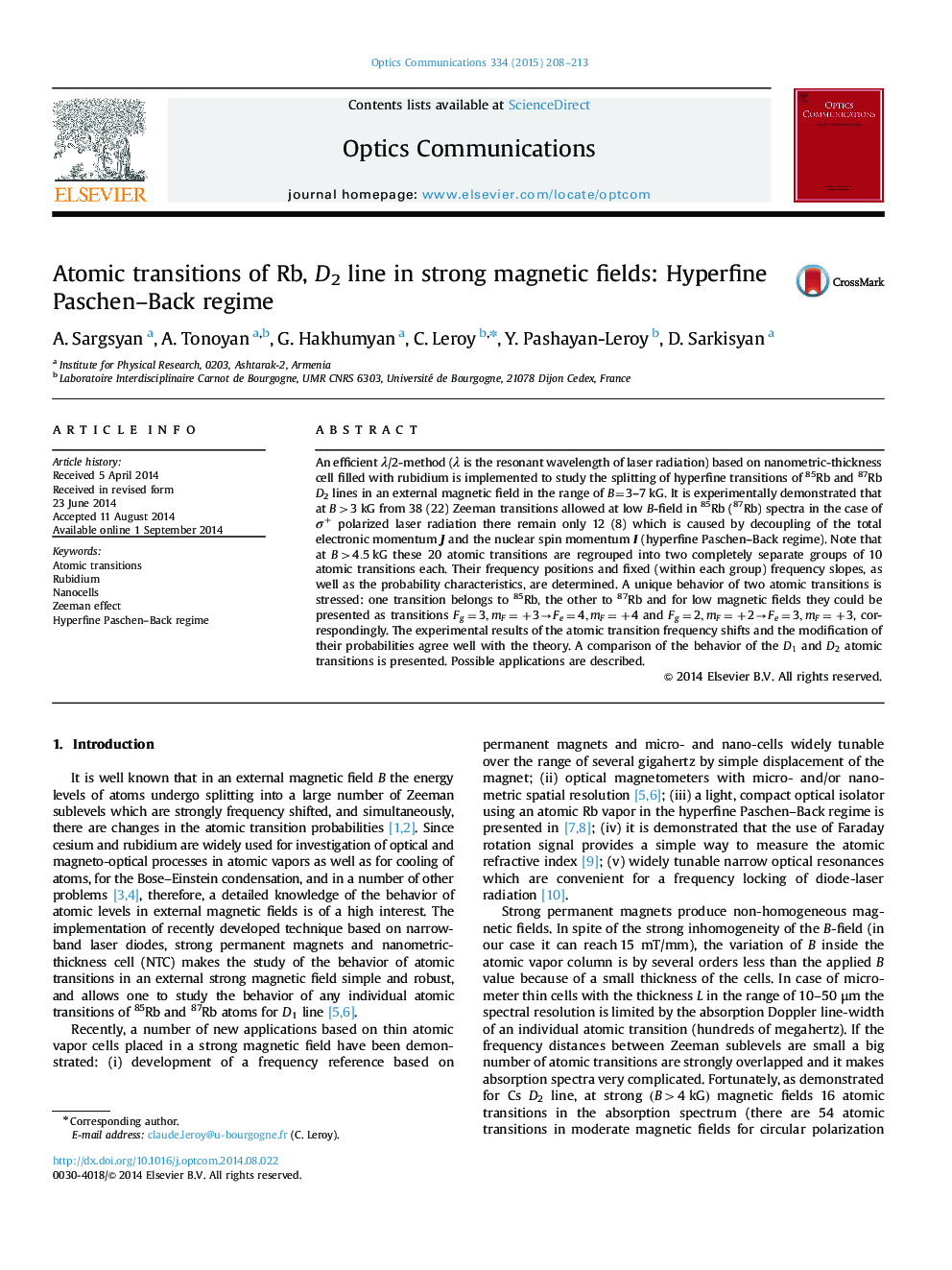| Article ID | Journal | Published Year | Pages | File Type |
|---|---|---|---|---|
| 7930700 | Optics Communications | 2015 | 6 Pages |
Abstract
An efficient λ/2-method (λ is the resonant wavelength of laser radiation) based on nanometric-thickness cell filled with rubidium is implemented to study the splitting of hyperfine transitions of 85Rb and 87Rb D2 lines in an external magnetic field in the range of B=3-7 kG. It is experimentally demonstrated that at B>3kG from 38 (22) Zeeman transitions allowed at low B-field in 85Rb (87Rb) spectra in the case of Ï+ polarized laser radiation there remain only 12 (8) which is caused by decoupling of the total electronic momentum J and the nuclear spin momentum I (hyperfine Paschen-Back regime). Note that at B>4.5kG these 20 atomic transitions are regrouped into two completely separate groups of 10 atomic transitions each. Their frequency positions and fixed (within each group) frequency slopes, as well as the probability characteristics, are determined. A unique behavior of two atomic transitions is stressed: one transition belongs to 85Rb, the other to 87Rb and for low magnetic fields they could be presented as transitions Fg=3,mF=+3âFe=4,mF=+4 and Fg=2,mF=+2âFe=3,mF=+3, correspondingly. The experimental results of the atomic transition frequency shifts and the modification of their probabilities agree well with the theory. A comparison of the behavior of the D1 and D2 atomic transitions is presented. Possible applications are described.
Keywords
Related Topics
Physical Sciences and Engineering
Materials Science
Electronic, Optical and Magnetic Materials
Authors
A. Sargsyan, A. Tonoyan, G. Hakhumyan, C. Leroy, Y. Pashayan-Leroy, D. Sarkisyan,
